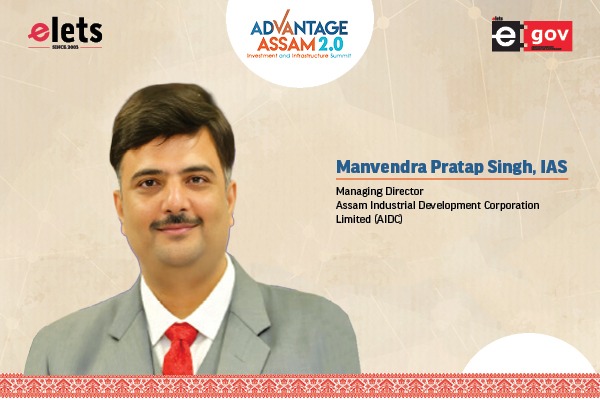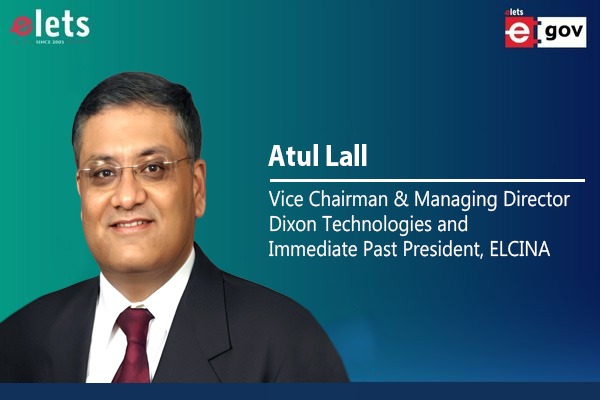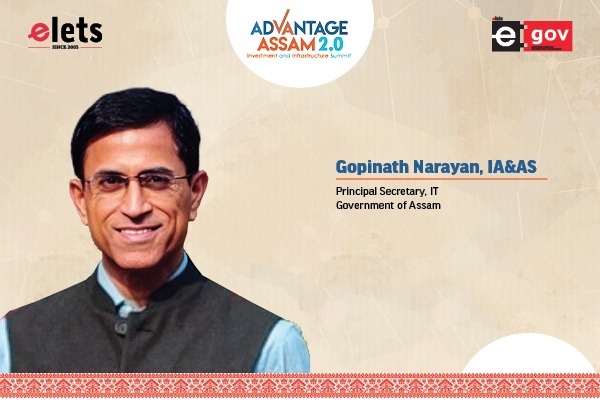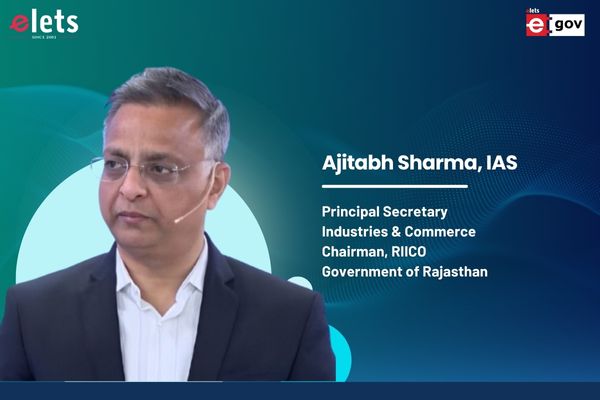Nandan Nilekani has been given the charge of the one of most important eGovernance projects -UID. Can the National ID card Project create a backbone upon which governance and economic development rest comfortably?
It was a pleasant surprise to know that the UPA government after getting a fresh mandate from the people of India thought it fit to pick a professional like Mr Nandan Nilekani and appoint him for one of the most important eGovernance projects such as the National ID Card (NIDC) Project. A tough road lies ahead for Nandan and we wish him a successful stint in this new role.

The idea of National ID Card is nothing new. it has been there for quite sometime and already pilot projects had been initiated in at least two states at huge costs. The issue became a talking point during the elections when BJP announced in its manifesto the implementation of the “Multi Purpose National Identity (MNIC) cards”. Now Congress has capitalised on this opportunity as the ruling party and one should appreciate the need of urgency shown by the Government regarding UID after taking charge.

While Nandan as an experienced IT professional can be expected to lead the project team to the most optimal solutions and deliver the goods. But it needs to be watched how would he address the issues of building and maintaining a reliable data base, security of the data, budget and neutrality of technology and vendors. Another major outcome that needs to be seen is that the purpose and need for a national id can range from country to country. Some countries have suggested the national id to fight terrorism and control illegal immigration. Some countries have suggested the same to control tax evasion. There are other countries which have proposed the scheme for citizen identification in order to distribute the various Government schemes. The national id is also proposed in order to eliminate multiple ids in various Government departments.We need to watch how does our UID shape up in months ahead.

Nilekani while speaking at a felicitation ceremony said,”The key issue is to ensure there are no duplicates. The problem with existing identity systems is that there are a lot of duplicates.” He further said his job was restricted to creating an identity system and not to ensure that government benefits reach people. “It’s about the infrastructure. However, value added applications, central, state or private, can be built on the identity system. For example, the Karnataka government may decide to implement the public distribution system using this identity system,” he further added.

Lets hope bureaucrats, politicians and support of people of India all add momentum to UID project under the able leadership of Nandan Nilekani.
|
Nandan Nilekani’s Profile Till recently Namdan Nilekani was the CEO and Managing Director of the Infosys. He was conferred the Padma Bhushan in 2006. Nilekani was born in Bangalore. His father Mohan Nilekani was a manager in Minerva Mills. Nilekani had his initial schooling in Bangalore. Due to his father’s transferable job Nilekani moved to his uncle’s place at Dharwad at the age of 12. This taught Nilekani to be independent. In 1973, at the age of 18, he got into IIT Mumbai. After graduating in electrical engineering in 1978, Nilekani joined Patni Computers. Here he worked under Infosys Founder Narayana Murthy. Three years later in 1981, Nilekani along with Murthy and five other co-founders founded Infosys. While Murthy stayed in India, Nilekani shifted to the US to take care of Infosys’ interests there. He was the company’s marketing face. In 1980s and 90s Nilekani and his team worked hard to build Infosys. Today Infosys’ success story has become a legend in India’s corporate history. Nilekani is recipient of several honours and awards. In January 2006, he became one of the youngest entrepreneurs to join 20 global leaders on the prestigious World Economic Forum (WEF) Foundation Board. He figures among one of the 100 most influential people in the world by Time Magazine, 2006. In 2005 he was awarded the prestigious Joseph Schumpeter prize for innovative services in the field of economy, economic sciences and politics. In 2006, Nilekani was conferred the Padma Bhushan, one of the highest civilian honours of India. |
Way back in the year 2002, the Multipurpose National Identity Card (MNIC) project was initiated under the Atal Behari Vajpayee-led NDA government. It was an initiative of the Indian government to create a national ID for every Indian citizen with the objective of increasing national security, managing citizen identity and facilitating e-governance.In May 2007, the Indian government launched a pilot project on MNIC and issued cards in selected regions of the country in contemplation of later implementing a nation-wide identification system. The Ministry of Home Affairs (MHA) claimed that the identification system will strengthen national security while facilitating efficiency in e-governance. MHA further said that the system will gather the personal data of Indian citizens – including gender, age, marital status, permanent address, names of family members – into a national register, the maintenance of which will be outsourced to a group of technology corporations. Each citizen will be assigned a specific number that will be used as a reference for various socio-economic databases including passports, driving licenses, and for accessing health care and education.
At that time the government was calling it the “mother of all cards” because it was pitched to be the the most definitive proof of citizenship ever, overriding your passport, ration card, even your prized electoral card. Government was planning to spend around INR 5000 crore on it. The card would contain the personal details, photograph, finger biometry and blood group. The MHA was so keen on the MNIC project that it brushed aside the opposition voiced by the Election Commission of India (ECI), which pointed out that electoral identity cards were “good enough” proof of identity. Incidently by that time EC had spent INR 1,000 crore over a decade, yet didn’t manage to cover the country’s 600 million but the Home ministry insisted that the MNIC was required for purposes of national security, and that the EC’s identity cards could easily be duplicated and the MNIC will provide a credible and unique individual identification system.
Unique Identification Authority of India
In Februrary 2009, the Unique Identification Authority of India (UIDAI) was established by Government of India for implementing the envisioned Multipurpose National Identity Card or Unique Identification card (UID Card) project in India. The authority aims at providing a unique number to all Indians, but not smart cards. The authority would provide a database of residents containing very simple data in biometrics.
The UIDAI is part of the Planning Commission of India. Nandan Nilekani, former co-chairman of Infosys Technologies, was appointed as the first Chairman of the authority holding a Cabinet rank. R S Sharma, an IAS Officer of Jharkhand Government cadre has been appointed as the Director General and Mission Director of the Authority. He is known for his efforts in working for e-Governance projects for Jharkhand due to which the state received a number of awards for Best Information Technology Trends State in India.
Merger of MNIC and UIDAI
The MNIC project is now integrated with the UIDAI project. An empowered group of ministers (EGOM) under the leadership of the External Affairs Minister Pranab Mukherjee approved the decision on November 4, 2008. The Department of Information Technology issued a press release confirming the development on November 10, 2008. The necessity for a centrally issued ID is accentuated by the growing problems of illegal immigrants in various parts of the country. The ID is expected to serve as a unifying document to identify the citizens of India. The events of November 26 in Mumbai have hastened the set up of the National Authority for Unique Identity. The body was set up on January 27, 2009.
The initial phase of the project is expected to cover nine States and four Union Territories. The UID will be issued to people living in the coastal villages of Gujarat, Maharashtra, Goa, Karnataka, Kerala, Tamil Nadu, Andhra Pradesh, Orissa and West Bengal. The Union Territories of Dadar and Nagar Haveli, Lakshadweep, Puducherry and Andaman & Nicobar Islands shall also be covered in this first phase expected to deliver the identity cards by early 2010.
 Nandan Nilekani being conferred Padma Bhushan in the year 2006 bt the then President of India, Dr. a P J Abdul KalamResponsibilities of UIDAI
Nandan Nilekani being conferred Padma Bhushan in the year 2006 bt the then President of India, Dr. a P J Abdul KalamResponsibilities of UIDAI
The UIDAI will have the responsibilities to lay down plans and policies to implement the Unique Identification Scheme. It will also own and operate the Unique Identification Number database, will be responsible for its updation and maintenance on an ongoing basis, will identify the targeted groups for various flagship programmes which are National Rural Employment Guarantee Scheme, Sarva Shiksha Abhiyaan, National Rural Health Mission and Bharat Nirman. The unique identification number would ensure that any lacuna in these schemes is removed so that the benefits do not reach those they are not meant for.
Goals
It is believed that Unique National IDs will help address the widespread embezzlement that affects subsidies and poverty alleviation programmes such as NREGA. Addressing illegal immigration into India and terrorist threats is another goal of the programme. Most reports suggest that the plan is for each Indian citizen to have a unique identification number with associated identifying biometric data and photographs by 2011. The Authority is liaising with various national, state and local government entities to begin this process. The Union Labour Ministry has offered its verified Employment Provident Fund (EPFO) database of 42 million citizens as the first database to be integrated into the unique ID system.
Budget
The Interim budget presented by Finance Minister Pranab Mukherjee on February 16, 2009 allocated INR 100 Crore towards the establishment of the National Authority of Unique Identity under the National Planning Commission. The government has earmarked INR 100 crore to establish “a comprehensive system of unique identity for the resident population of the country”.
|
Legal amendments made to facilitate the MNIC project The Citizenship Act, 1955, was amended and a specific section on registration of citizens and issuing cards had been included. In addition the Citizenship (Registration of Citizens and Issue of National Identity Cards) Rules, 2003 had been notified in the Government of India Gazette Vide GSR No. 937(E) dated December 10, 2003. Important amendments to the provisions of the Citizenship Act, 1955 The Central Government may appoint such other officers and staff as may be required to assist the Registrar General of Citizen Registration in discharging his functions and responsibilities. The procedure to be followed in compulsory registration of the citizens of India shall be such as may be prescribed. In sub-section(2) of section 18 (ia) has been inserted after clause (i) the procedure to be followed in compulsory registration of the citizens of India under sub-section (5) of section 14A;In sub-section (3) of section 18 the following proviso has been inserted “PROVIDED that any rule made in respect of a matter specified in clause (ia) of sub-section (2) may provide that a breach thereof shall be punishable with imprisonment for a term which may extend to three months, or with fine which may extend to five thousand rupees, or with both”. |
Advantage UIDThis is not for the first time that the government is thinking that all Indians should have a Unique Identification Number. The idea has been floating around for a few years, sometimes in active mode and at other times in hibernating mode, with even a few pilots launched here and there, mostly to no avail. This time, however, the government appears to be serious. Shaken by the terrorist attacks, the government has gone ahead and appointed former Infosys CEO Nandan Nilekani to head the Unique Identification Authority of India.
 The corporate world has been particularly hearty in cheering Nilekani’s appointment, seeing this as a new direction in which ‘skill’ and ‘management techniques’ may at last be starting to be welcomed in governance too. But we must remember that this is just a beginning, one needs to watch out how this project shapes up as we would not like to count the eggs before they hatch.
The corporate world has been particularly hearty in cheering Nilekani’s appointment, seeing this as a new direction in which ‘skill’ and ‘management techniques’ may at last be starting to be welcomed in governance too. But we must remember that this is just a beginning, one needs to watch out how this project shapes up as we would not like to count the eggs before they hatch.
The most powerful argument for the Multi-purpose National Identity Card (MNIC) have been around security. But there are good reasons not to get carried away by this rhetoric. There are many developed countries that do not use a national ID card – Wikipedia currently lists Australia, Denmark, Ireland, Japan and the UK among countries without a national identification scheme.
Australia recently even shelved its plans to create one, in the face of opposition. And the American Social Security Number, which is the most commonly cited example of the kind of system we ‘need’, is not really a system for the ‘identification’ of individuals, although it is used in that way by certain sections of American society. In the US, Social Security numbers were introduced for a pension programme based on employer contributions, and were not intended for broad ID purposes. And despite this limited focus, it took five years for the programme to get off the ground. Even today many agencies of the US government and the states do not use it to establish identity at the point of delivering services or benefits An additional difficulty, in the case of the UIDAI, is the expectation that it should deliver something within two or three years. This may be too much to expect, given that much of the ‘implementation’ would need to negotiate its way past the countless array of programmes that the Centre and States have, each with its own well-guarded administrative and political turf. In the optimism over Nilekani’s appointment to the UIDAI, we should not forget the complexity of the challenge ahead. The Unique ID certainly has the potential to transform the delivery of public services in important ways. But this is not the only plus point.
The major benifit of UID to watch out in the future will be to see if it can create a backbone upon which governance and economic development rest comfortably. The ID should be a catalyst for such change, rather than merely a tool for authentication. 
Sandeep Budki
sandeep@egovonline.net
|
Highlights
|
Be a part of Elets Collaborative Initiatives. Join Us for Upcoming Events and explore business opportunities. Like us on Facebook , connect with us on LinkedIn and follow us on Twitter, Instagram.
"Exciting news! Elets technomedia is now on WhatsApp Channels Subscribe today by clicking the link and stay updated with the latest insights!" Click here!



 Nandan nilekani assuming office of UIDAI
Nandan nilekani assuming office of UIDAI









